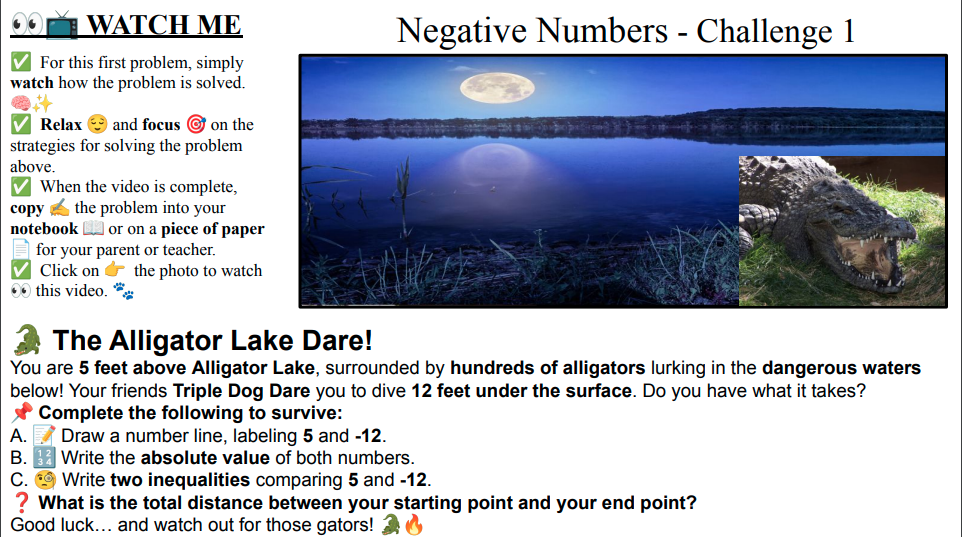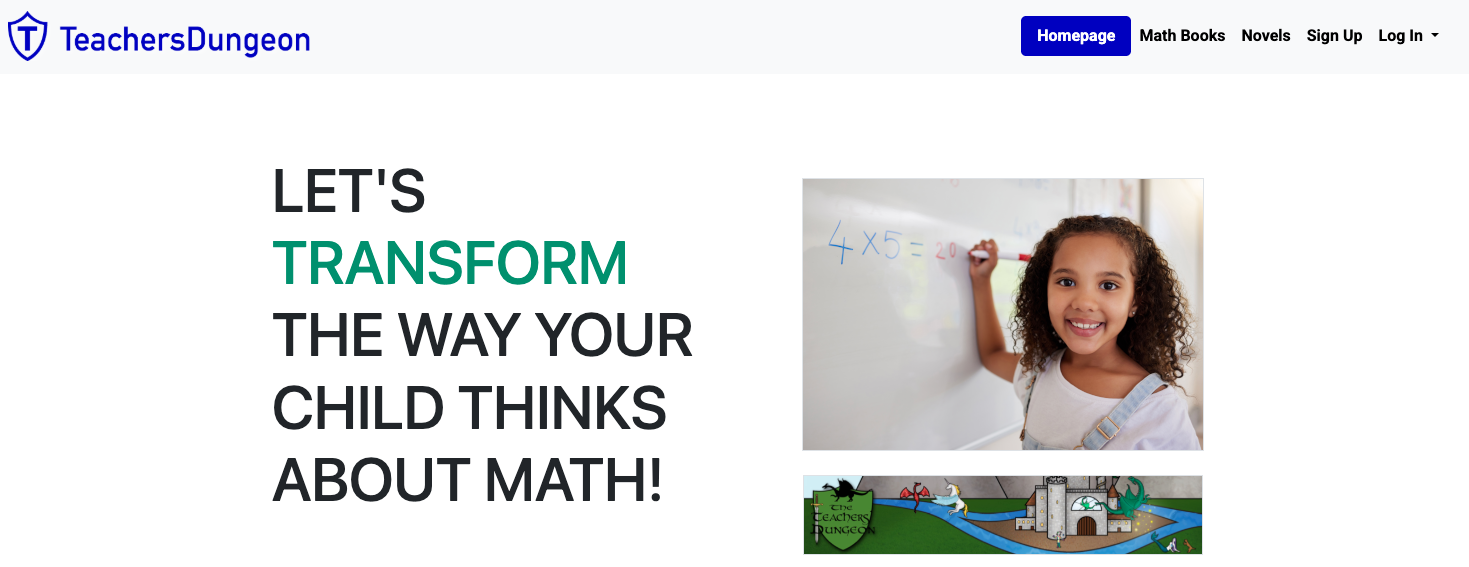Welcome to Dangerous Waters
This post is an Introduction to
Negative Numbers
This lesson is designed to offer math help online for children who are beginning to work with negative numbers.
Many students struggle with negative numbers because they challenge deeply ingrained ideas about how numbers work. For years, children are taught that numbers start at zero and go up—and that “more” always means “bigger” or “higher.” Suddenly introducing values less than zero flips that logic on its head. The concept of zero as a midpoint, rather than a starting line, is abstract and unfamiliar.
On top of that, operations like subtracting a negative number (which results in a positive) seem counterintuitive without a strong conceptual foundation. That’s why it’s essential to introduce negative numbers through visual models, real-world examples, and interactive challenges—like the problems in Dangerous Waters — that make the math meaningful and memorable.
Why Teach Negative Numbers in Elementary School?
Many math standards reserve negative numbers for middle school, but early exposure can dramatically boost confidence and performance later. Here are the top 10 reasons why negative numbers belong in your upper elementary math curriculum:
1. They Make Math Real
From freezing temperatures to losing points in a game, negative numbers appear in real life every day. When students learn about them early, they’re better equipped to understand the world.
2. They Strengthen Number Sense
Learning that numbers don’t stop at zero helps students grasp that math extends in both directions, improving their mental number lines and understanding of value.
3. They Lay the Groundwork for Algebra
Negative numbers are essential for solving equations, working with variables, and understanding the coordinate plane—key concepts in algebra and beyond.
4. They Promote Logical Thinking
Asking questions like “Is -7 more or less than -2?” sharpens reasoning and comparison skills.
5. They Support STEM Learning
Negative values are everywhere in science (think: sea level, electricity, or pH levels) and economics (debts and losses). Understanding them is essential for interpreting real-world data.
6. They Teach the Full Story of Operations
Negative numbers reveal deeper patterns in how math operations work—especially with subtraction and inverse relationships.
7. They Boost Math Confidence
When kids see that they can solve “hard” problems, their confidence skyrockets—and negative numbers become just another puzzle to figure out.
8. They Encourage Mathematical Conversations
“What does it mean to go from +5 to -12?” becomes a springboard for deep thinking and class discussions that go beyond memorization.
9. They Prepare Students for Graphing
Negative numbers are a must for plotting coordinates in all four quadrants—a vital step for geometry, robotics, game design, and more.
10. They Bridge Concrete and Abstract Thinking
Negative numbers help students move from counting physical objects to thinking in terms of abstract value and position—a major milestone in cognitive development.
Make It Stick with Problems like “The Alligator Lake Dare”
In the Alligator Lake Dare, students:
-
Draw a number line labeling +5 and –12
-
Write the absolute value of each number
-
Compare them with inequalities
-
And determine the total vertical distance between their starting and ending points
It’s a thrilling, standards-based challenge that makes negative numbers unforgettable—and just a little dangerous (watch out for those gators!).
Challenge 1 – Watch Me
Alligator Lake
You are standing 5 feet above Alligator Lake. There are hundreds of alligators in these dangerous waters. Your friends Triple Dog Dare you to swim 12 feet under the surface of Alligator Lake. Your only hope of survival is to complete the following correctly:
- Draw a number line. Label your starting point 8 and your end point -18.
- Write the absolute value for both your starting point and your end point.
- Write two inequalities for your starting point and your end point.
- What is the distance between your starting point and your end point?
Now – Press PLAY and watch the math tutorial video below. Then copy these strategies into your notes.
I like to give a special thanks to the photographers at freeimage.com for allowing me to use their pictures.
Lake photo by Pellinni
Alligator photo by B Smart
Challenge 2 – Work with Me
Montana Moose
Montana Moose starts his day taking a cool drink from the dangerous waters of this lake. The temperature at the lake is 8 degrees Celsius. In the evening, he runs to the top of the mountains where he looks over the beautiful vista. The temperature at the mountain top is -18 degrees Celsius.
- Draw a number line. Label the temperature at the lake 8 and the temperature on the mountain top -18.
- Write the absolute value for both 8 and -18.
- Write two inequalities for 8 and -18.
- What is the difference between 8 and -18?
Now – Gather your materials and press PLAY. We’ll solve this problem together while you watch the math tutorial video below.
I like to give a special thanks to the photographers at freeimage.com for allowing me to use their pictures.
Lake photo by Jack Sanders
alligator photo by Lisa Langell
Challenge 3 – On Your Own
Reginal Ram
Reginal Ram Is up on the tippy top of that mountain hiding in the clouds. The temperature is a brisk – 22 degrees Celsius. Needless to say he is cold, so he scrambles down the rocky ridge to these dangerous waters where hungry cougars are always on the lookout for a tasty meal. Reginal takes a drink of water. The water temperature is 17 degrees Celsius. Reginal’s only hope of survival is for you to answer the following correctly.
- Draw a number line. Label the temperature of the lake 17 and the temperature on the mountain top -22.
- Write the absolute value for both 17 and -22.
- Write two inequalities for 17 and -22.
- What is the difference between these two temperatures?
Once you complete the problem – Hit PLAY on the math tutorial video below. Good Luck!
I like to give a special thanks to the photographers at freeimage.com for allowing me to use their pictures.
Lake photo by Tatjana CH
Ram photo by Bill Sarver

